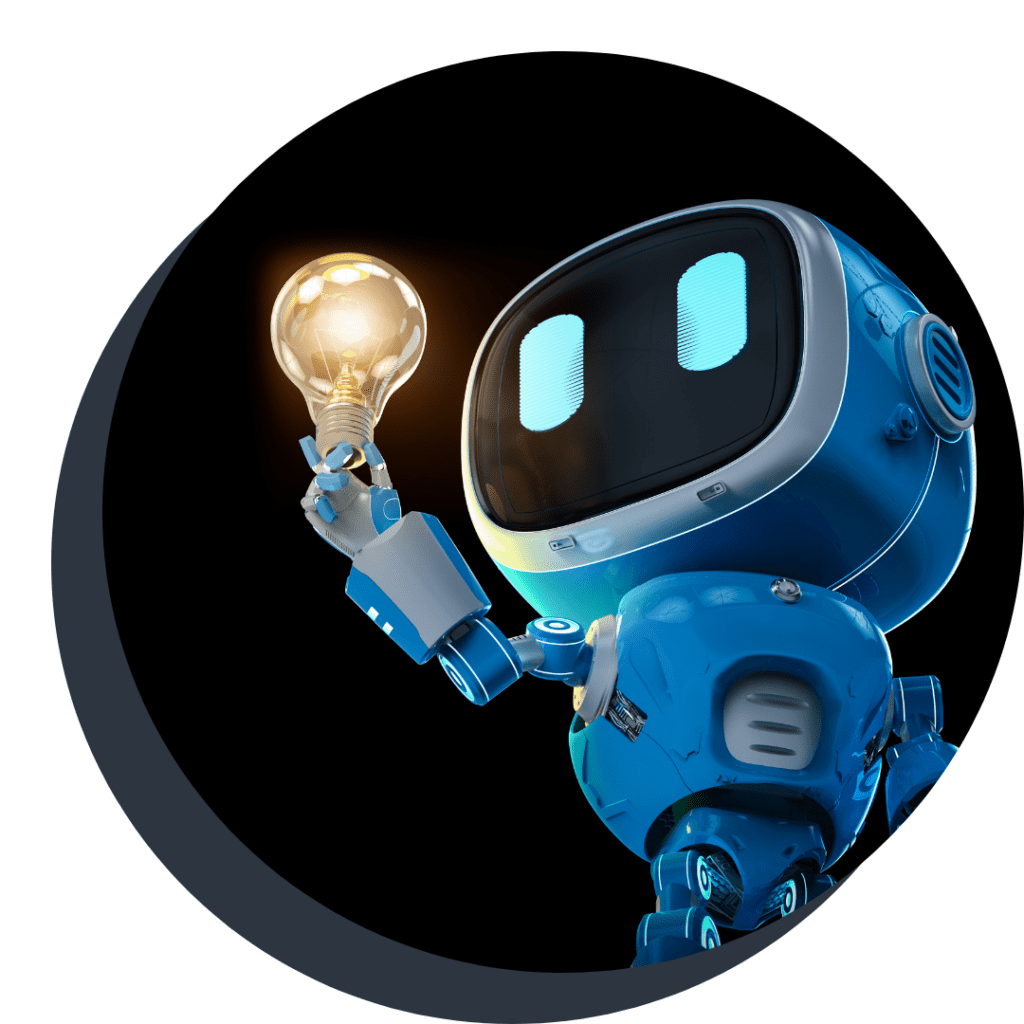Elevate your operations with our expert global solutions
Introduction
Building resilient CX strategies is essential for preparing a brand to handle the unexpected. Whether it is a market shift, technological failure, or another disruption, a company’s ability to adapt quickly and recover efficiently can mean the difference between maintaining a competitive edge and falling behind. What is important is that, until recently, CX stability was largely about pivoting operations, keeping service standards, and minimising downtime or buyer dissatisfaction during a crisis. However, in today’s AI-driven world, where change is rapid and often unpredictable, the true goal of resilience goes beyond mere survival. It is about thriving in the face of challenges and keeping the engine of customer loyalty running without interruption.
One thing is clear: the customer experience landscape is undergoing a profound transformation. Artificial intelligence leads the charge, reshaping how businesses communicate, manage interactions, and structure support. At the same time, consumer expectations are shifting—fuelled by a wealth of choices, countless touchpoints, and a growing demand for seamless, personalised journeys and rapid resolutions. For instance, according to HubSpot, 90% of CX leaders report that buyer expectations have reached an all-time high, exceeding benchmarks set in previous years. Digitalisation, mobility, and the erosion of geographical boundaries have additionally made global connectivity the norm. For brands, the result is an intensified competitive race. Quick adaptation, coupled with the ability to anticipate needs, realign processes, and deliver exceptional service on the spot, has become the cornerstone of success.
reshaping how businesses communicate, manage interactions, and structure support. At the same time, consumer expectations are shifting—fuelled by a wealth of choices, countless touchpoints, and a growing demand for seamless, personalised journeys and rapid resolutions. For instance, according to HubSpot, 90% of CX leaders report that buyer expectations have reached an all-time high, exceeding benchmarks set in previous years. Digitalisation, mobility, and the erosion of geographical boundaries have additionally made global connectivity the norm. For brands, the result is an intensified competitive race. Quick adaptation, coupled with the ability to anticipate needs, realign processes, and deliver exceptional service on the spot, has become the cornerstone of success.
No Excuses: The Case for Constant CX Excellence
The consequences are tough. Companies are under constant pressure to operate better, faster, and at a larger scale while delighting customers anytime, anywhere, and under any circumstance. Expectations for improvements in performance and satisfaction metrics have become the norm. There is little room for pauses, obstructions, or lapses in such a dynamic environment. In other words, organisations must continually excel, whether in stable times or when unforeseen obstacles arise. Ensuring continuity and sustained satisfaction is not optional. Below are some compelling reasons why CX excellence is a business imperative:
Staying Ahead When the Stakes Are High
Overall, as the world is far from ideal and crises happen regularly, CX resilience becomes paramount. Nevertheless, securing future success will not happen by magic. Companies must reorganise processes, sharpen strategies, build new capabilities, upskill agents, and fortify their tech stacks. Consequently, contact centres across industries are transforming into well-equipped, intelligent hubs where automation and human ingenuity flourish. With cutting-edge tools, innovation boosts productivity, drives optimisations, enhances knowledge-sharing, and elevates interactions.
Nevertheless, the key is not to get lost in the technological matrix. Decision-makers should fully embrace progress, embedding solutions that deliver tangible results. On the other hand, they ought to retain the personal touch, particularly when empathy, nuanced understanding, and contextual oversight are required. These are the qualities that even the best technology cannot replicate in certain situations.
In summary, the foundation of resilient strategies in today’s tech-driven world lies in delivering effective and uninterrupted CX services without compromising quality while upholding fairness and ethical practices at every turn. Mastering these challenges will ensure that organisations can stay ahead of the curve, whatever the future may bring.
Without a proper resilience plan, businesses face operational disruptions, reputational damage, customer loss, and employee uncertainty. Failing to adapt quickly to crises leads to financial setbacks, service downtimes, and a loss of trust with customers and stakeholders, ultimately threatening long-term survival and growth. For instance, Lehman Brothers’ $639 billion collapse became the largest bankruptcy in U.S. history. It also severely damaged consumer trust across the financial sector due to Lehman Brothers’ failure to maintain transparent communication and prioritise client relationships during the crisis (FasterCapital).
Laying the Groundwork for Resilient CX Strategies
A resilient CX strategy begins with a strong foundation. Companies must create a comprehensive contingency plan, identifying potential threats and analysing various scenarios. Next, they should build an adaptable infrastructure that allows processes, teams, and systems to embrace change with agility. Finally, preparing people with the right skills, mindset, and adaptability is key. Agile brands do not just recover from disruptions. They bounce forward, transforming challenges into opportunities for growth and improvement.
Key elements of a sustainable CX strategy include:
1. Risk Identification and Contingency Planning
First, a resilient CX strategy begins with identifying potential risks and creating contingency plans to address them. This involves analysing possible disruptions, whether technological, market-driven, or operational, and preparing solutions in advance. Developing clear protocols for dealing with these risks ensures that businesses can pivot quickly, minimising downtime and customer dissatisfaction. Regularly testing and updating these plans keeps organisations ready for any scenario, from service outages to rapid shifts in buyer expectations.
2. Market Monitoring and Risk Analysis
Second, monitoring market trends and analysing potential risks are crucial for building a strong foundation of business continuity. By staying attuned to external factors like competitor moves, changing regulations, or shifts in consumer sentiment, brands can anticipate challenges and proactively adjust. This foresight empowers them to take preemptive actions, reducing the impact of disruptions. For instance, if new laws are introduced that affect how products are marketed or sold, a company can quickly adjust its compliance processes and communication strategies to avoid penalties and maintain trust.
3. Agile Systems
Resilience begins with building systems that swiftly adjust to market changes, disruptions, or external pressures. Therefore, such infrastructure should be flexible, scalable, and able to absorb sudden demand spikes. Automation is a key tool here, helping to streamline repetitive tasks and enabling human agents to focus on higher-value work. For example, a surge in incoming queries can overwhelm support teams during a product recall. An agile system equipped with automation, like AI-powered chatbots, can manage FAQs, triage requests, and direct complex cases to the right agents. This ensures timely, accurate responses while maintaining efficiency and preventing burnout within the support department.
4. Data-Driven Insights
Additionally, for businesses to be truly resilient, it is essential to leverage current customer data. By continuously monitoring buyer preferences, sentiment shifts, and market dynamics, companies can gain actionable insights that enable them to respond rapidly and effectively. This real-time intelligence allows for personalised, targeted strategies and faster decision-making. This is to say that predictive analytics can identify a decline in shopper sentiment when a competitor introduces a new feature, prompting the firm to adjust its approach immediately. Moreover, integrating data across various touchpoints lets companies detect emerging trends and potential issues early on and adjust appropriately on time.
5. Data Labelling and Annotation
Data labelling and annotation are crucial for building resilient customer experiences with AI. While AI solutions are powerful, their effectiveness relies on how well we prepare them. By labelling data, humans teach algorithms the meaning of specific words, actions, and signals in various contexts, helping them understand intentions and learn patterns. For example, during AI model training, human agents may label customer interactions to guide the AI in choosing appropriate responses. This process enables algorithms to recognise emotional nuances and tailor their responses accordingly. In this way, humans ensure that AI aligns with customer expectations, improving its ability to respond empathetically and effectively.
5. Empowered Teams
Although technology matters to a large extent, empowered people make it work. Resilient CX strategies must rely on well-trained, adaptable teams who can confidently navigate changes and leverage tools effectively. This is especially true during major shifts, such as the rapid transition to remote operations, where traditional workflows may falter. Companies that invest in continuous upskilling ensure their agents remain competent, motivated, and aligned with business goals, regardless of location or disruption. Additionally, fostering a culture of collaboration and providing strong leadership can help CX employees quickly adapt to new technologies and processes, maintaining exceptional service levels even in the face of uncertainty.
6. Feedback Measurement
Ultimately, measurement of the results is the last essential step in the CX resilience journey. Such an initiative allows managers to identify strengths and areas for improvement, ensuring their strategies remain agile to address weaknesses and provide flexibility. Regular risk assessments involving cross-functional teams facilitate proactively spotting vulnerabilities and planning reparations. Tracking key performance indicators, particularly during crises, offers real-time insights into how quickly an organisation can respond and recover, helping to refine strategies. Furthermore, gathering feedback from customers and employees through surveys and interviews reveals areas for improvement, fostering a culture of continuous improvement and better preparedness for future challenges.
More Key Elements to Explore: Automation, Personalisation and Ethical Approach
With a solid foundation in place, it is also crucial to dive deeper into three elements that significantly amplify CX resilience. These game-changers are AI-driven automation, hyper-personalisation, and ethical responsibility. Together, these components not only boost efficiency but also help businesses build adaptable, sustainable customer experiences that can adapt to challenges and remain strong over time.
1. AI and Automation: Strengthening Resilience Through Smart Collaboration
In a fast-moving landscape, resilience is about more than efficiency. It takes intelligent systems that adapt, support, and scale with human teams. That is why AI and related technologies deserve more attention than ever before. How does artificial intelligence strengthen CX resilience? First, AI enables real-time customer data analysis, transforming information into actionable insights. This allows teams to respond swiftly to behavioural shifts — a critical advantage when customer sentiment changes unexpectedly. On the other hand, it also automates time-consuming tasks like ticket routing and data processing, helping to maintain smooth operations during disruptions. Most importantly, integrated AI tools offer real-time prompts and contextual guidance, enabling agents to respond faster and more accurately. It is not about replacing people but amplifying their impact, building a blended, adaptable workforce.
2. Personalisation: The New Standard in CX
Modern customers expect more than generic service. They desire experiences tailored very precisely and adequately to their behaviours and preferences. This is why hyper-personalisation means using data intelligently to anticipate needs and customise every interaction across channels. For instance, with AI, companies can predict when support may be needed, suggest relevant products, and adapt journeys in real-time. This is not just about convenience. It is about building trust and loyalty by being consistently relevant. Whether through chatbots, human agents, or digital platforms, delivering a unified, personalised experience strengthens relationships and helps businesses stay resilient in a shifting landscape.
3. Ethics and Fairness in CX
As businesses integrate advanced solutions and algorithms, they must remain mindful of the ethical implications. Ensuring fairness and transparency in CX practices is key to maintaining customer trust, particularly when automation is involved. Transparency about customer data collection, processing, and storage is essential. Businesses must also comply with privacy regulations and uphold ethical data practices. Furthermore, ongoing monitoring and auditing of AI systems are critical to prevent bias and ensure fairness in customer treatment. Inclusive CX strategies should reflect customers’ diverse needs and backgrounds, ensuring all are treated equally.
The Human Touch: The Critical Factor in an AI-Driven World
While AI and automation are transforming CX, human empathy, understanding, and judgment still have no replacement. Technology can streamline processes, enhance efficiency, and deliver consistent results at scale, but it cannot replicate the emotional intelligence or the genuine human connection that plays a pivotal role in fostering lasting relationships. Below are key factors that highlight this unique collaboration.
1. Empathy Beyond Algorithms
Usually, customers facing challenges seek more than solutions: they expect understanding. Human agents can recognise emotional nuances, adjust their tone, and offer reassurance that automated systems cannot. For example, if a customer’s urgent delivery has failed multiple times, an AI system might efficiently reschedule it, but a human agent can empathise, apologise sincerely, and suggest creative alternatives. Human agents can also read between the lines, addressing unspoken concerns and offering a more comprehensive resolution. This ability to connect emotionally is what truly builds lasting customer relationships.
2. Strategic Use of Humans in CX
Most importantly, a resilient CX strategy requires the thoughtful integration of human and automated solutions. Automation is perfect for high-volume, routine inquiries, but human agents should handle more intricate problem-solving and creative thinking, emotionally charged situations, or complaints or issues that require escalation. The most effective organisations know when to transition customers from automated systems to human agents for more nuanced handling, ensuring efficiency without sacrificing quality.
3. Hybrid Experiences: Combining Technology and Humanity
Furthermore, the future of CX lies in blending AI and human interaction. AI handles routine tasks with resilient strategies, while humans provide emotional intelligence and problem-solving. AI can identify issues early and provide context for human agents when intervention is needed, creating a seamless flow between automation and human empathy. This hybrid approach allows businesses to scale operations efficiently without sacrificing the quality of customer interactions, enabling human agents to focus on complex issues that benefit from emotional intelligence and creativity.
4. Well-being
Next, the well-being of human agents is critical in sustaining a resilient and effective CX strategy. Investing in the well-being of customer service teams is essential to maintaining the quality of interactions and preventing emotional fatigue. Businesses must prioritise support systems for their human agents, offering training in emotional resilience, stress management, and time management. Additionally, fostering a culture that values empathy and work-life balance will ensure agents feel empowered, appreciated, and capable of delivering their best performance.
Conclusion
In conclusion, resilience and adaptability are powerful drivers that enable businesses to thrive in an ever-evolving CX landscape. We can expect the future of customer experience to be defined by the seamless integration of technology and the human touch. By crafting CX strategies that blend automation with empathy, businesses will not only navigate today’s fast-paced changes but also position themselves for long-term success, no matter what the future holds. As brands invest in technology, data, and people, they will lead the way in delivering exceptional, personalised customer experiences that foster loyalty and sustainable growth.
Elevate your operations with our expert global solutions
Frequently Asked Questions (FAQ)
1. Why is resilience important in customer experience strategies?
Resilience is vital because it allows businesses to adapt to disruptions and unexpected challenges. A resilient CX strategy ensures that companies maintain service quality and customer satisfaction during tough times, helping them stay competitive in a rapidly changing landscape.
2. How can AI and automation improve CX resilience?
AI and automation enhance CX resilience by enabling real-time data analysis, automating routine tasks, and providing timely insights that help businesses respond quickly to customer needs. By supporting human agents with AI tools, companies can maintain smooth operations during disruptions, ensuring consistent service quality.
3. What role does personalisation play in resilient CX strategies?
Personalisation is essential for building strong customer relationships. It allows companies to offer tailored experiences based on customer preferences and behaviours. By predicting needs and providing relevant recommendations, businesses can foster loyalty and keep customers engaged, even during challenging times.
4. How can businesses ensure fairness and ethical practices in CX?
Companies must prioritise transparency and fairness in their CX strategies to maintain buyer trust. This includes clearly communicating how customer data is collected, processed, and used, adhering to privacy regulations, and continuously auditing AI systems to prevent bias and ensure ethical customer treatment.
5. Why is the well-being of human agents crucial in a resilient CX strategy?
The well-being of human agents is essential because it directly impacts the quality of customer interactions. A well-supported, emotionally resilient team can handle complex, emotionally charged situations more effectively. Investing in training, stress management, and work-life balance ensures agents can deliver high-quality service without burnout, contributing to overall CX resilience.




